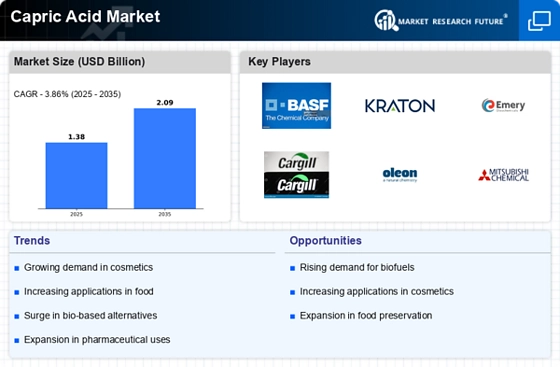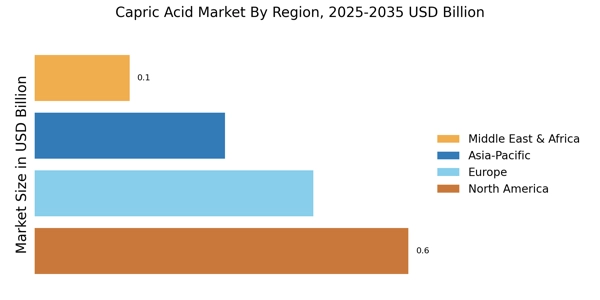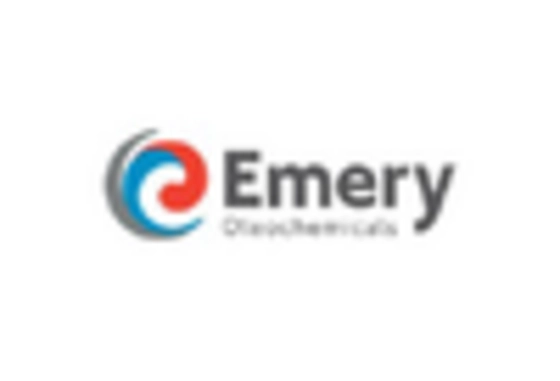The Capric Acid Market is currently characterized by a dynamic competitive landscape, driven by increasing demand across various applications, including food, cosmetics, and pharmaceuticals. Key players such as BASF SE (Germany), Kraton Corporation (United States), and Cargill, Incorporated (United States) are strategically positioned to leverage their extensive product portfolios and innovative capabilities. BASF SE (Germany) focuses on sustainability and innovation, aiming to enhance its product offerings while reducing environmental impact. Meanwhile, Kraton Corporation (United States) emphasizes its commitment to developing bio-based products, which aligns with the growing consumer preference for sustainable solutions. Cargill, Incorporated (United States) is actively expanding its global footprint, particularly in emerging markets, thereby enhancing its competitive edge in the capric acid sector.
The business tactics employed by these companies reflect a concerted effort to optimize supply chains and localize manufacturing processes. The Capric Acid Market appears moderately fragmented, with several players vying for market share. However, the collective influence of major companies like BASF SE (Germany) and Cargill, Incorporated (United States) suggests a trend towards consolidation, as these firms seek to enhance operational efficiencies and respond to evolving consumer demands.
In August 2025, BASF SE (Germany) announced the launch of a new line of bio-based capric acid products, which are designed to meet the growing demand for sustainable ingredients in the cosmetics industry. This strategic move not only reinforces BASF's commitment to sustainability but also positions the company as a leader in the bio-based segment of the market, potentially attracting environmentally conscious consumers and businesses alike.
In September 2025, Kraton Corporation (United States) entered into a strategic partnership with a leading bio-refinery firm to enhance its production capabilities for capric acid. This collaboration is expected to streamline operations and reduce production costs, thereby allowing Kraton to offer competitive pricing while maintaining high-quality standards. Such partnerships may also facilitate access to innovative technologies, further strengthening Kraton's market position.
In July 2025, Cargill, Incorporated (United States) expanded its manufacturing facility in Southeast Asia, aiming to increase its production capacity for capric acid. This expansion is indicative of Cargill's strategy to capitalize on the growing demand in the Asia-Pacific region, which is projected to witness significant growth in the coming years. By enhancing its production capabilities, Cargill is likely to improve its supply chain reliability and responsiveness to market needs.
As of October 2025, the Capric Acid Market is witnessing trends that emphasize digitalization, sustainability, and the integration of advanced technologies such as AI. Strategic alliances among key players are shaping the competitive landscape, fostering innovation and collaboration. The shift from price-based competition to a focus on technological advancements and supply chain reliability is becoming increasingly evident. Companies that prioritize innovation and sustainability are likely to differentiate themselves in this evolving market, positioning themselves for long-term success.


















Leave a Comment